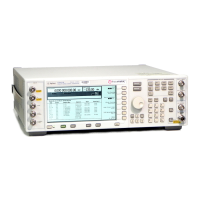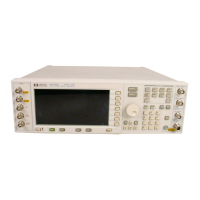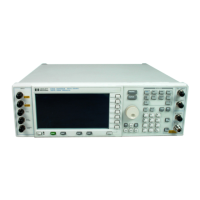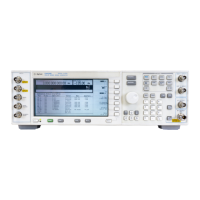Downloading and Using Files
Data Transfer Troubleshooting
Chapter 4190
Data Requirement Reminders
To avoid direct-download-to-PRAM problems, the following conditions must be met:
1. The data must be in binary form.
2. For every bit of modulation data (bit 0), you must provide seven bits of control information
(bits 1-7).
Bit Function Value Comments
0 Data 0/1 This bit is the data to be modulated. This bit is
“unspecified” when burst (bit 2) is set to 0.
1 Reserved 0 Always 0.
2 Burst 0/1 Set to 1 = RF on.
Set to 0 = RF off.
For non-bursted, non-TDMA systems, this bit is set to 1
for all memory locations, leaving the RF output on
continuously. For framed data, this bit is set to 1 for on
timeslots and 0 for off timeslots
3 Reserved 0 Always 0.
4 Reserved 1 Always 1.
5 Reserved 0 Always 0.
6 Event 1 Output 0/1 Setting this bit to 1 causes a level transition at the
EVENT 1 BNC connector. This can be used for many
functions. For example, as a marker output to trigger
external hardware when the data pattern has restarted,
or to create a data-synchronous pulse train by toggling
this bit in alternate addresses.
7 Pattern Reset 0/1 Set to 0 = continue to next sequential memory address.
Set to 1 = end of memory and restart memory playback.
This bit is set to 0 for all bytes except the last address of
PRAM. For the last address (byte) of PRAM, it is set to 1
to restart the pattern.

